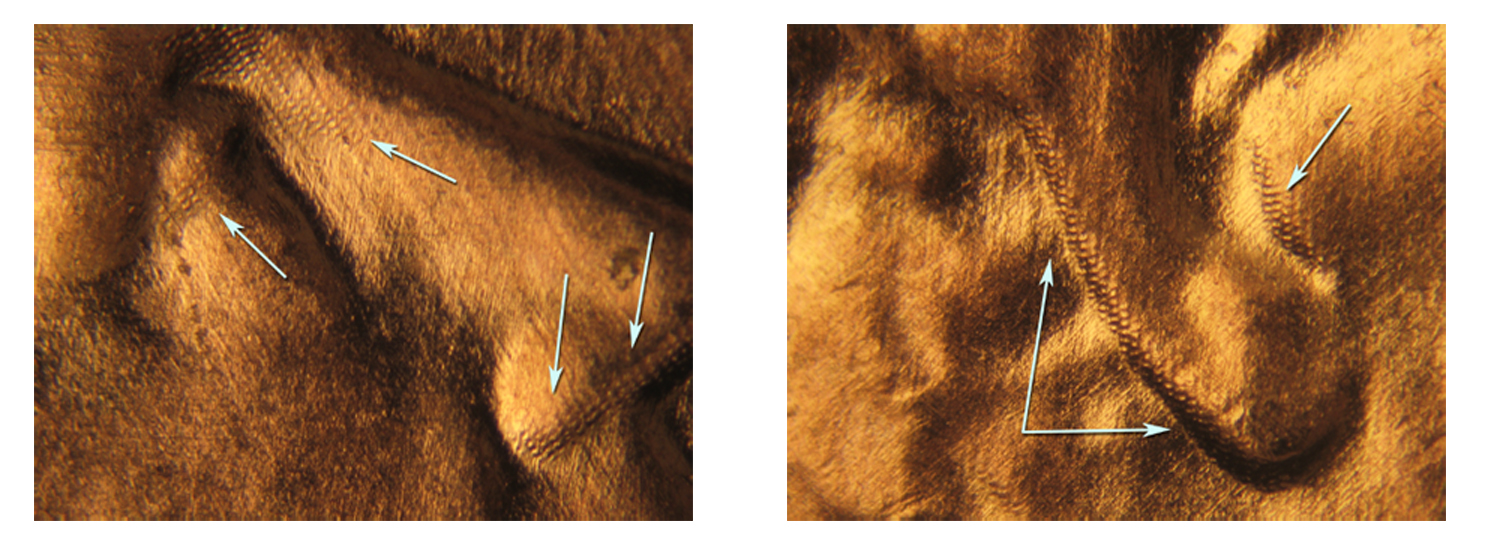Die Anomaly Explored
by Jason Cuvelier – CONECA Member


November 2012 — Die anomaly as a term should be irrelevant unless it is identified with a particular error type. But what happens when a find shows a die anomaly without a specific cause or known explanation?
In April of this year, on the Lincolncentresource.net forums, a user named George de Pozsgay posted pictures of a curious 2012 Lincoln shield cent. Various parts of the obverse showed what looked like patches of small regular-pattern or a weave. It was similar to that of finely woven cloth. Was it a struck through error type?
After the coin was forwarded over, and initial examining finished, it was unclear what the source of the struck through could be as it did not fit the expected diagnostics of this kind of error. The weird pattern was not present on the reverse face, or any other part of the coin. The phenomenon was confined to only the obverse and its presence was located on the underside of Lincoln’s nose, eye, ear and assorted hair details.
It seemed plausible the source of the struck through areas could have been caused from a thin plastic sheeting with a tooth to the surface, perhaps something similar to that of a micro-cloth. However, if it were a struck through error, one would not expect the fields to be unaffected. With struck through errors you would expect there to be significant loss of detail in those areas covered by a foreign object.
This anomaly seemed to be somehow die related however, even this was not making sense as the affected areas were in recessed parts of the die, areas that should retain fewer details. This is because those areas experience greater pressure during the hubbing process.
Since I’m familiar with coins that show concentric lathe lines, it certainly is not abnormal for marks on the die face to survive the hubbing process and show themselves on the devices. To read more check out the NOV/DEC 2012 Issue of Errorscope!



